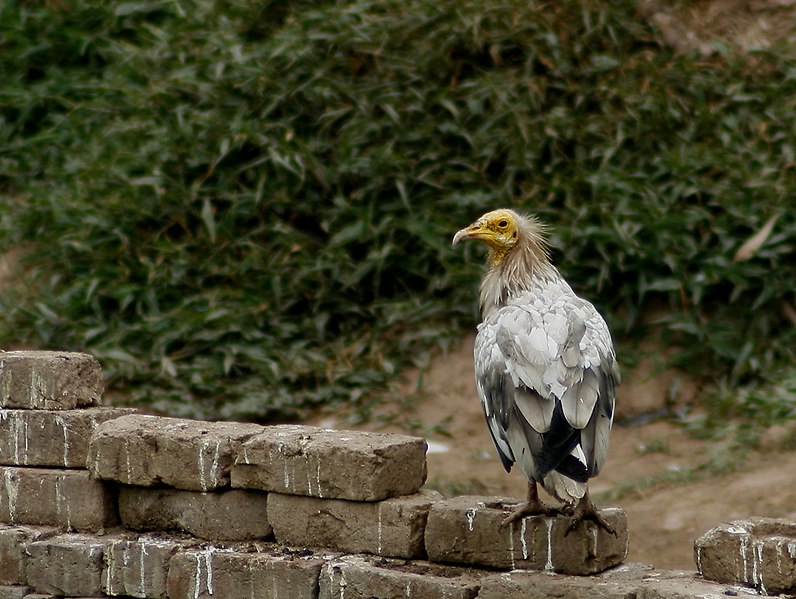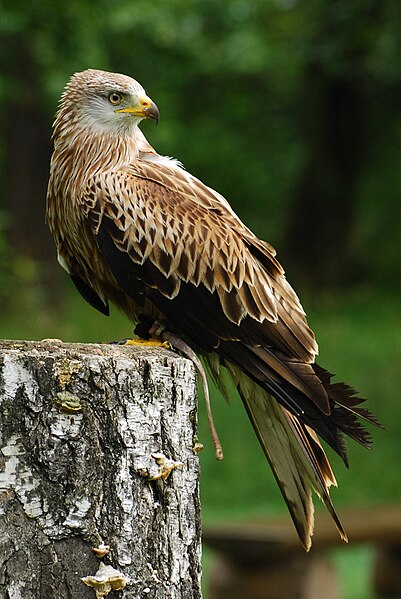 Many people concerned with the conservation of wild birds focus their efforts on the tropics. The plight of tropical parrots has, with good reason, long monopolized the attentions of conservationists and concerned citizens alike, and birds of all kinds reach their greatest diversity south of the equator. I suppose the fact that ornithologists often prefer to do their research in warm places doesn’t hurt either! However, a recent report has revealed that shocking numbers of protected songbirds, storks, eagles, vultures and other birds are being trapped, shot, poisoned and otherwise killed in at least 38 European countries.
Many people concerned with the conservation of wild birds focus their efforts on the tropics. The plight of tropical parrots has, with good reason, long monopolized the attentions of conservationists and concerned citizens alike, and birds of all kinds reach their greatest diversity south of the equator. I suppose the fact that ornithologists often prefer to do their research in warm places doesn’t hurt either! However, a recent report has revealed that shocking numbers of protected songbirds, storks, eagles, vultures and other birds are being trapped, shot, poisoned and otherwise killed in at least 38 European countries.
The Scope of the Problem
Earlier this month (July 6-8, 2011), representatives from most European countries met in Cyprus for the European Conference on the Illegal Killing of Birds. A grim report resulted (please see below for text). Despite 30+ years of protection in some cases, birds of all kinds are regularly killed throughout Europe, and few countries have been able to effectively address the problem.
The reasons behind the poaching are as varied as the countries involved. Some species are hunted and sold as food or trophies, while others are seen as competitors that kill livestock (eagles) or consume crops. Sadly, large, conspicuous cranes, storks, vultures and eagles are often shot “for fun”.
Methods employed include shooting, trapping, netting and the use of glue-covered perches. Poisoning, which is growing in popularity, is particularly troublesome as non-target species and people are often impacted.
Spain
 Poison is the weapon of choice in Spain, where birds of prey are targeted, ostensibly to protect sheep and other livestock.
Poison is the weapon of choice in Spain, where birds of prey are targeted, ostensibly to protect sheep and other livestock.
Records indicate that in the past 10 years the following birds, several of which are globally threatened, have been killed (obviously untold others escaped detection):
2,000+ Red and Black Kites, 100+ Spanish Imperial Eagles, 2,000+ Griffon’s Vultures, 600+ Black Vultures, 300+ Egyptian Vultures, 7 Brown Bears and 800+ other species. Of these, only Imperial Eagles and Brown Bears are known to take sheep (an extremely rare event where eagles are concerned) – a mere 107 or so individuals out of the nearly 6,000 killed!
Food, Pet and Trophy Trades
Italy, Cyprus, Spain and France are the primary outlets for birds killed for human consumption, with an estimated 4.2 million individual birds shot in Cyprus in recent years.
Songbirds are captured for the pet trade, and the skins and eggs of rare species are sold to collectors.
The Changing Face of Poaching in Europe
![]() Crackdowns in certain countries have forced poachers to find new hunting grounds where enforcement is lax and conservation is not a priority. Non-EU countries such as Montenegro, Albania, Serbia, Bosnia and others are emerging as new illegal-hunting hotspots. It is believed that several species are suffering major losses in these countries, but accurate information is difficult to obtain at this point.
Crackdowns in certain countries have forced poachers to find new hunting grounds where enforcement is lax and conservation is not a priority. Non-EU countries such as Montenegro, Albania, Serbia, Bosnia and others are emerging as new illegal-hunting hotspots. It is believed that several species are suffering major losses in these countries, but accurate information is difficult to obtain at this point.
Further Reading
Text of the Report mentioned above
Hunters Jailed for Killing White Storks
Egyptian vulture image referenced from wikipedia and originally posted by Rakeshjdogra
White Storks image referenced from wikipedia and originally posted by Dixi
 That Bird Blog – Bird Care and History for Pet Birds
That Bird Blog – Bird Care and History for Pet Birds




Wind mills are spreading like wild fire here in Spain. Unfortunately mills kill thousands of birds and authorities are allowing mills in protected bird areas.
Money talks…
Hello Julian, Frank Indiviglio here.
Thanks for your interesting comment. It’s a difficult problem…same has been occurring here in the USA as well, although on a smaller scale than in Europe. Bats being killed also, unfortunately.
Please let me know if you need any further information, and please keep me posted.
Best regards, Frank Indiviglio.